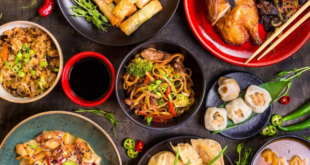Introduction
In recent years, sustainable eating has become a pivotal focus in the culinary world, with food waste reduction at its core. Chefs and consumers alike are embracing practices that minimize waste, leading to innovative dishes and eco-conscious dining experiences. This shift not only addresses environmental concerns but also reshapes culinary traditions.
The Rise of Zero-Waste Cooking
Zero-waste cooking emphasizes utilizing every part of an ingredient, ensuring that nothing goes to waste. This approach, known as root-to-stem for plants and nose-to-tail for meats, transforms what would be discarded into delectable dishes. For instance, Swiss chard stems can be chopped and added to sautés or soups, while broccoli stems might be roasted to enhance their flavor. Such practices are gaining momentum in both home kitchens and professional settings.

Innovative Use of Food Byproducts
Creative chefs are turning food byproducts into culinary delights. Shane Jordan, an English chef based in Bristol, is renowned for incorporating leftover fruit and vegetable skins into his recipes. By doing so, he not only reduces waste but also adds unique flavors and textures to his dishes. His approach has inspired many in the industry to rethink how they perceive and utilize food scraps.
Technological Advances in Reducing Food Waste
Technology plays a crucial role in minimizing food waste. Innovations like 3D food printing allow for the repurposing of food scraps into new culinary creations. For example, Upprinting Food, a Dutch startup, blends various food waste ingredients to create purees suitable for 3D printing, resulting in unique and sustainable dishes.
Culinary Events Promoting Sustainability
Special events are also spotlighting sustainable culinary practices. New York City’s inaugural “Make Food, Not Waste Restaurant Week” featured renowned restaurants crafting menus that minimized food waste. Chefs transformed vegetable peels, fish trims, and other scraps into gourmet offerings, demonstrating that sustainability can be both innovative and delicious.
Global Initiatives and Cultural Shifts
Beyond individual efforts, global movements are addressing food waste. In China, the “Clean Plate” campaign encourages diners to order only what they can consume, promoting the value of food and discouraging waste. This initiative has gained significant traction, with widespread participation and government support.
Conclusion
The integration of sustainable eating practices and food waste reduction is profoundly influencing culinary trends. From zero-waste cooking and innovative use of byproducts to technological advancements and global campaigns, the culinary world is embracing sustainability. These efforts not only address environmental challenges but also enrich the gastronomic landscape with creativity and purpose.
For more insights into sustainable culinary practices and innovative recipes, visit 365Tastes.
Additionally, learn more about how restaurants are tackling food waste and creating sustainable menus through this insightful article.
 Tastes | Live healthy every day
Tastes | Live healthy every day

